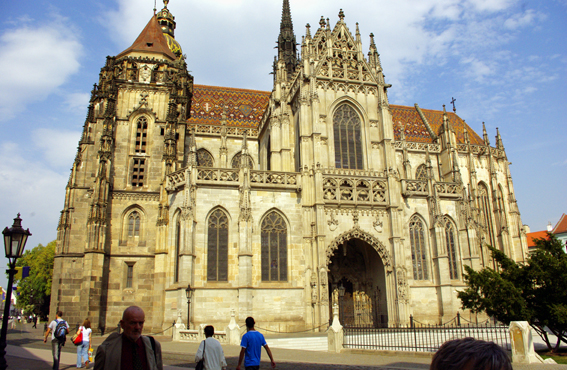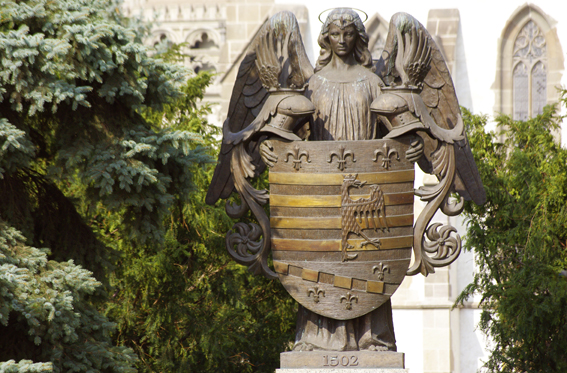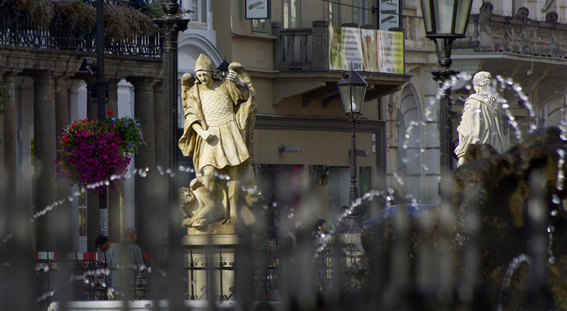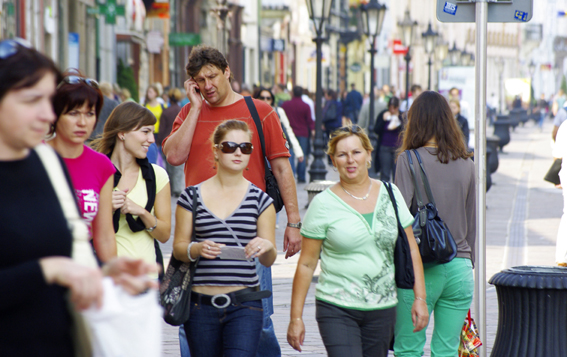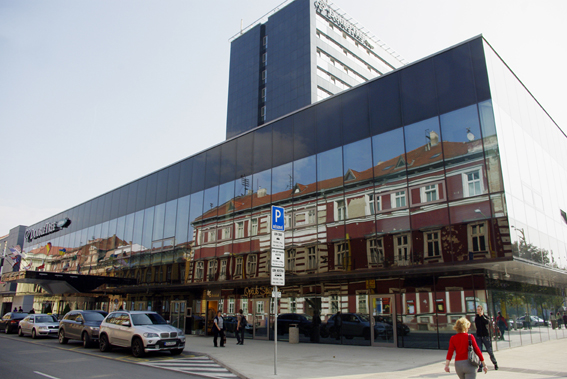According to the Italian daily newspaper Corriere della sera, Košice belongs to the group of twelve world cities of the future. It shares this honour with the likes of Pittsburg, Vladivostok, or Chinese Tianjin. In particular, the newspaper acknowledged the development potential of the city in the area of investments and its strategic location. In this ranking, Košice was characterised by the adjective "glocal", referring to its specific identity, which could become the foundation of its future development. The European Capital of Culture 2013 organising team plans a closer cooperation in this sphere with Marseille, which also features in the prestigious ranking. Zora Jaurová, the art director of the project commented in this respect, "The future of Košice lies in creative economy and the Košice INTERFACE 2013 project can be successfully implemented through cooperation on the local, regional, national and international levels. The interest by international media and the perception of Košice as the most promising city of the future are a positive starting point, thanks to which Košice and the region can establish themselves on the map of Europe."
The journalist Anna Maria Speroni and the photographer Guido Castagnoli spent a week in Košice. During their stay, they visited almost all city districts and important localities, including the historic city centre, satellite suburbs and Lunik IX. They were collecting information about the city's history, development plans, economic and industrial conditions; they were meeting the citizens of Košice and asking them about their views on their city. The reason behind their interest, which resulted in the personal visit to our city, was the inclusion of Košice among the twelve cities of the future in the Cities of the Future project. The project team evaluated several criteria and on the basis of this assessment, they assigned characteristic adjectives to individual cities.
We are presenting a complete translation of the article on Košice published by the Italian daily newspaper Corriere della sera on 27th November 2009 in the IO DONNA section:
Distant from the capital, but in the heart of Eastern Europe.
Košice. The tenth stop on our journey is the second largest city in Slovakia. For several years, it has been attracting foreign investors, in particular from the automotive industry, not only thanks to its favourable economic conditions, but also because it is a place to live. Its identity has remained untouched and today, it enchants foreigners.
The „IO DONNA" projects (Me, woman)
The city of the future, Košice. Medieval buildings, suburbs from the former USSR era, endless forests and heavy industry: numerous contrasts and a strong identity.
author: Anna Maria Speroni, photographs: Guido Castagnoli
Motto: To the east of the West
and to the west of the East.
The street of the pedestrian precinct, which splits into two and embraces the State Theatre and the St. Elizabeth Cathedral is lined with small clothes shops. In their shop windows, skirts and jackets of pastel colours of the East are displayed, extraordinary shades of green, a special scale of pink and unusual tones of blue. Antique shops and antiquarian bookshops are located in the adjacent streets. None of the large popular brands, which make all high streets in any part of the world look the same, are to be seen. In Košice, they are concentrated in large shopping centres, while the heart of the city has resisted. It takes the form of a maze of spacious courtyards concealing cafés and restaurants behind their entrances from the main street. Foreigners are settling in on the outskirts in the "industrial parks", estates developed by the city together with essential infrastructure for everyone who intends to start business here.
The historic city centre of Košice is the largest in Slovakia and the city is the second largest in the country. Other second places: The Peace Marathon, which has been organised since 1924 and is the second oldest marathon in the world, right after the Boston Marathon, and the city with the second largest forested area, right after Vienna. This was the idea behind an advertising campaign slogan several years ago, "We only are number two, therefore we give you the best; we want to become number one". Košice is heading in the right direction. Slovakia is considered to be the new Detroit (it is the country with the most cars produced per capita in the world – 105.7 cars per thousand population, even the Korean car maker Kia opened a factory there) and large automotive companies are based in the western part in the proximity of Bratislava. However, almost all kinds of car parts, such as gear boxes, air conditioning units and engines are manufactured here. In Kechnec, a small municipality 15 kilometres from Košice with a population of 1500, the German company Getrag-Ford, Italian Magneti Marelli and French Valeo created 3,500 work places. The reason is the Slovak magical formula – flat rate tax of 19%, lower labour costs and the adoption of Euro as of 1st January 2009; decisions which have thus far protected the country from the worst impacts of the economic crisis, in contrast with the neighbouring countries, namely Hungary and the Czech Republic. The geographic location of the city "to the east of the West and to the west of the East", as they say here, also plays an important role. It is located only a few kilometres from the borders with Poland, Hungary and Ukraine; the transport links are excellent, especially the two-type railway (one with the Western width standard and the other with wider railway tracks used in the former USSR), which facilitates transport in the East-West direction. The endeavour of the city and the region to support investors and the ability of the municipal authorities to make apparently negative indicators look positive in the eyes of investors are another asset. "Do we have a greater unemployment rate than the other regions of Slovakia? It means that it is easier to find qualified labour force here." claims Rastislav Puchala, the head of the office designated to help foreigners with fulfilling their administrative duties when establishing a business and solving bureaucratic problems. He also reveals that at present, estates with a total surface area of 2.5 million square kilometres are available to industrial business in the proximity of Košice and almost the same surface area is prepared for the tertiary sector. Finally, Mr. Puchala adds one more very simple and less technical reason behind the success, "This is a place to live." He settled here after having travelled all around the world in his previous position of a delegate of the Slovak Government. Transport is working well, health care services are excellent, the university is perfectly qualified, theatres offer great plays and forests, which surround the city, can even ameliorate the image of the soviet-style blocks of flats outlined on the horizon. And the life here is good, because despite the strong international community, the city of Košice has not sold its soul. It has always been used to foreigners. Since as early as the medieval times, it has been an important centre of trade. Even a Minorities Club based in the house, in which the Hungarian writer Sándor Márai was born, has been established. It is jointly used by the Hungarian, Czech and German groups for cultural events. In a certain way, if you live here, you cease to regard yourself as a foreigner. "You feel as a citizen of Košice in the first place, even more than a Slovak or a member of any other nation." claims Juliana Sokolova, who is a Hungarian national and returned here after ten years of studies and work in London and Berlin. At present, she works in
Gallery
